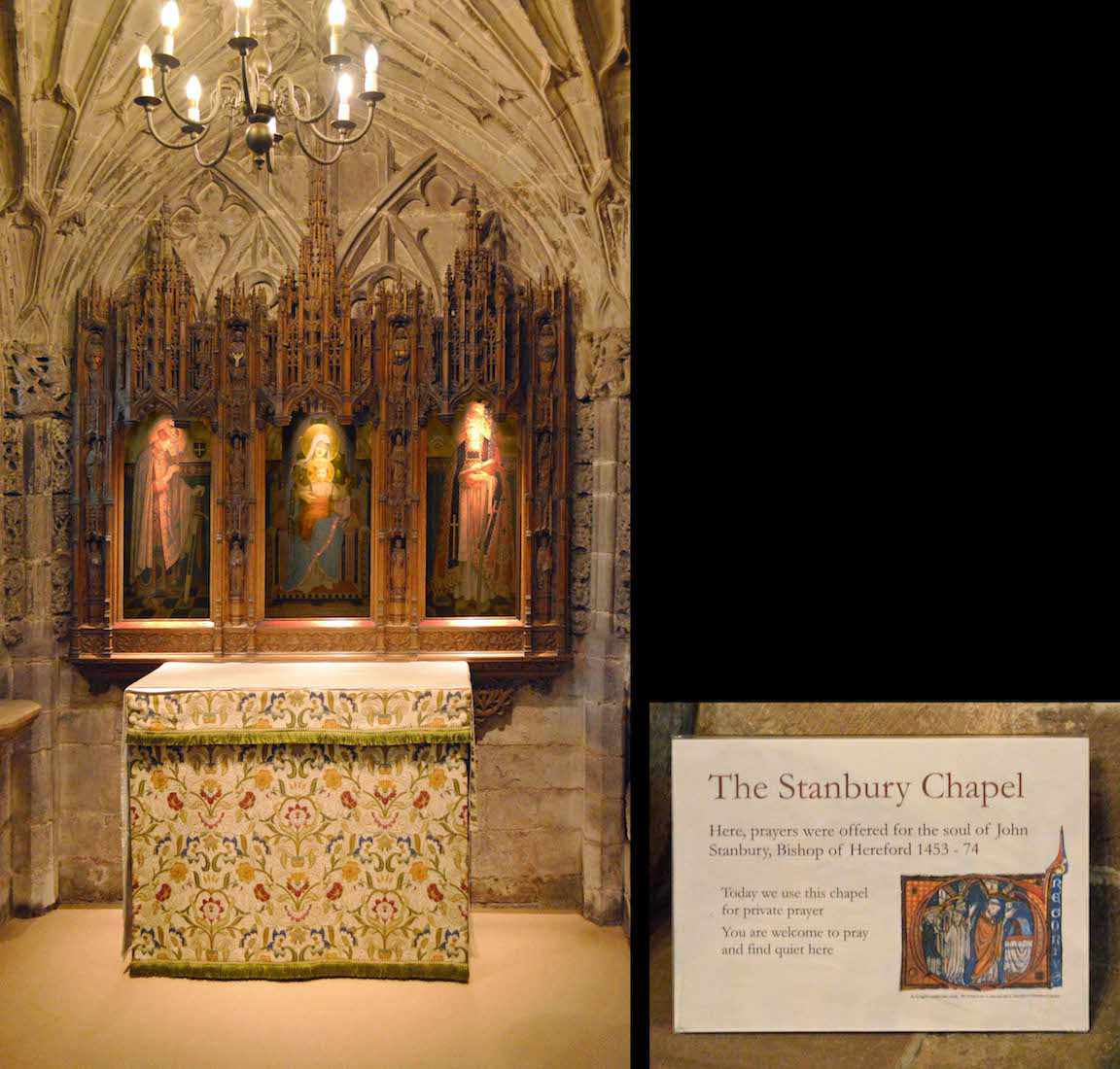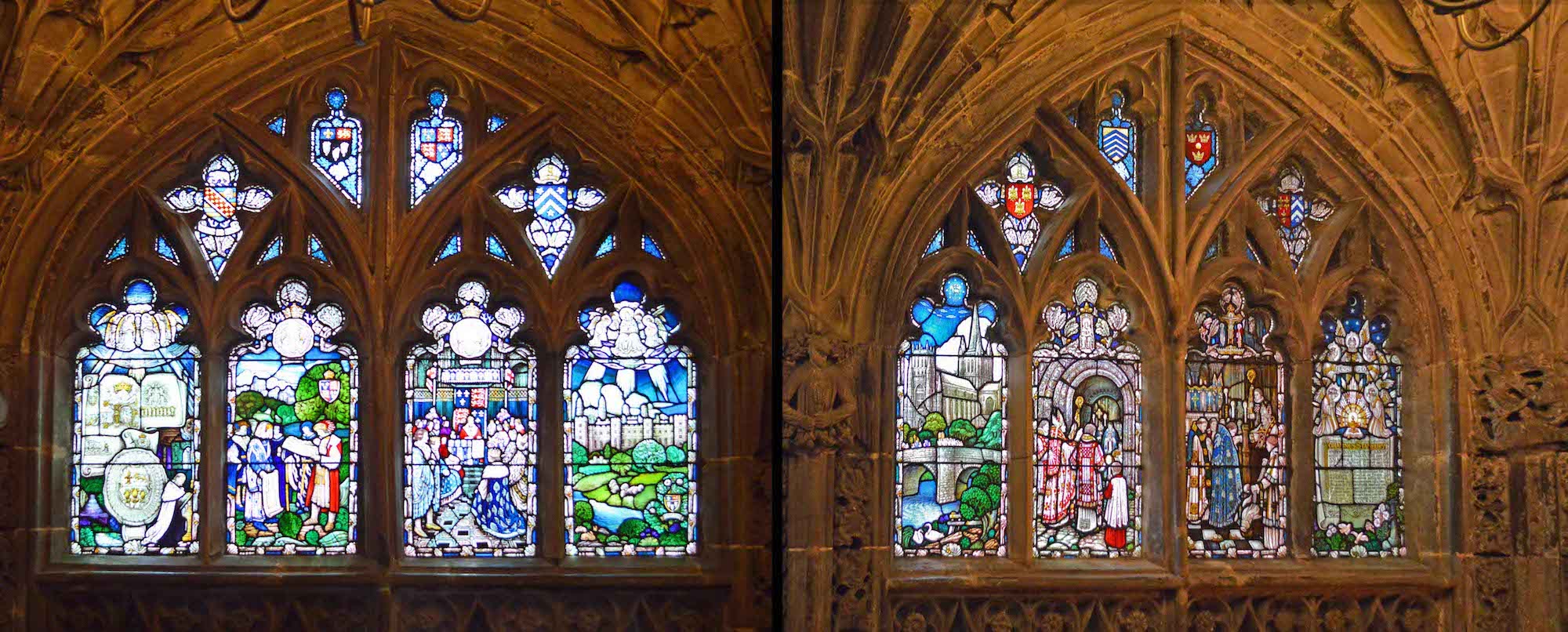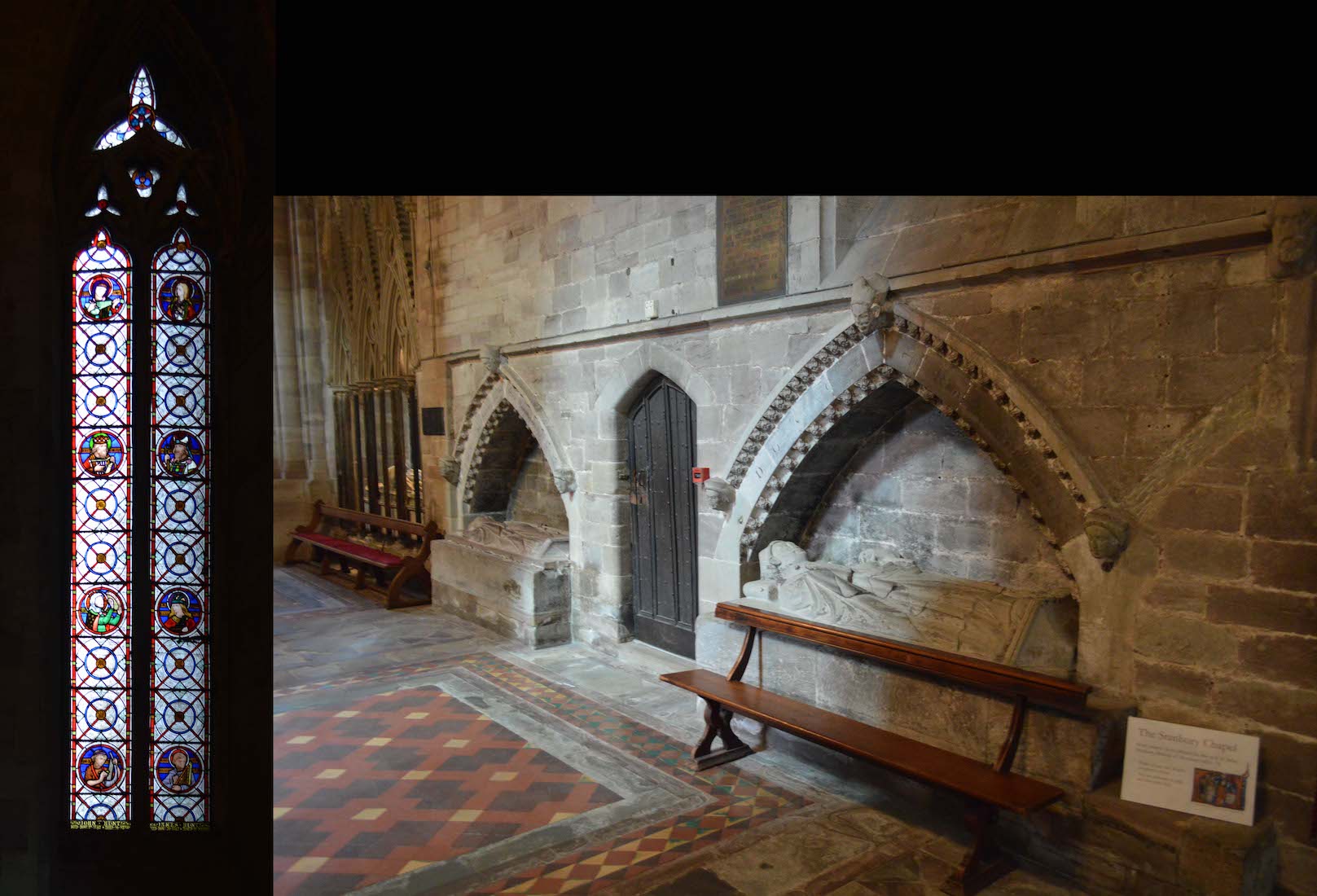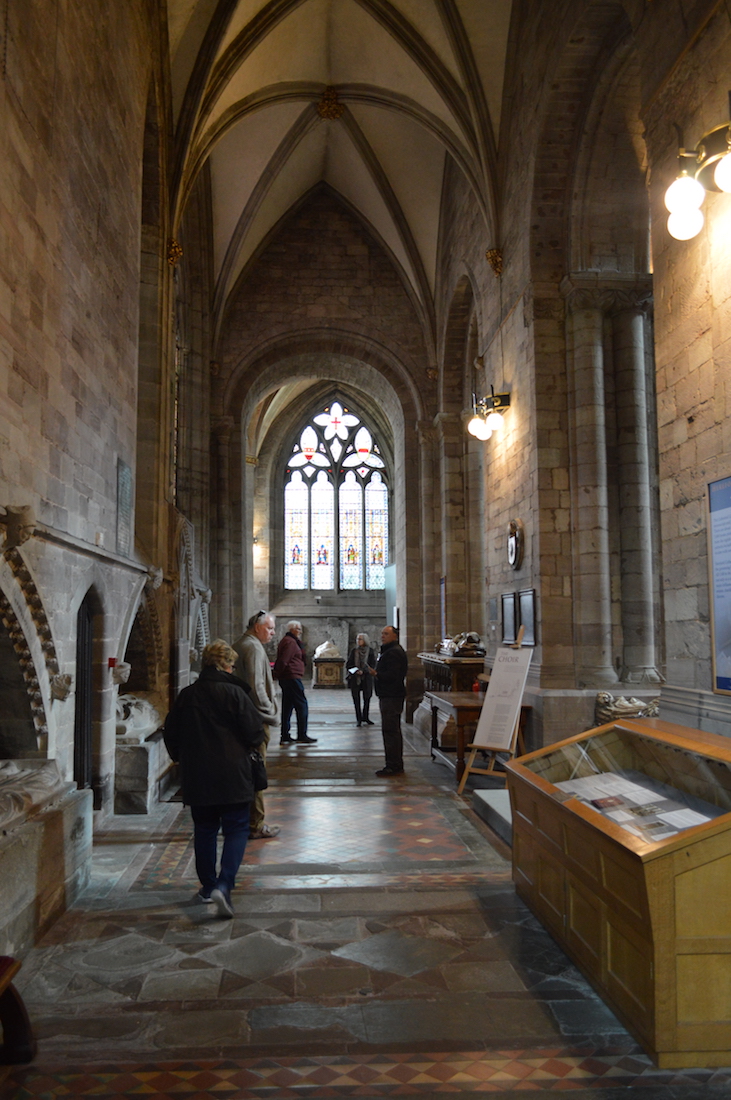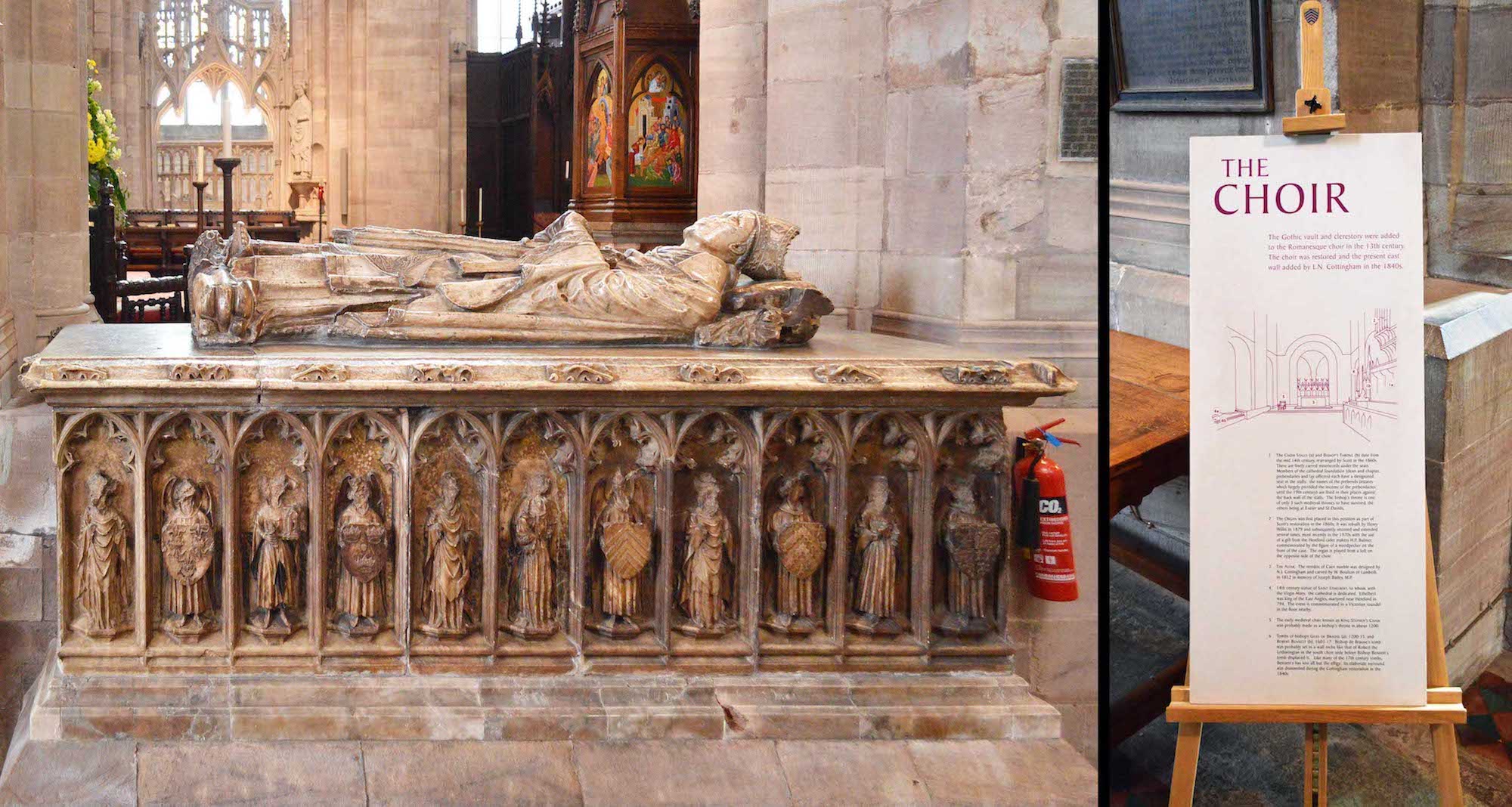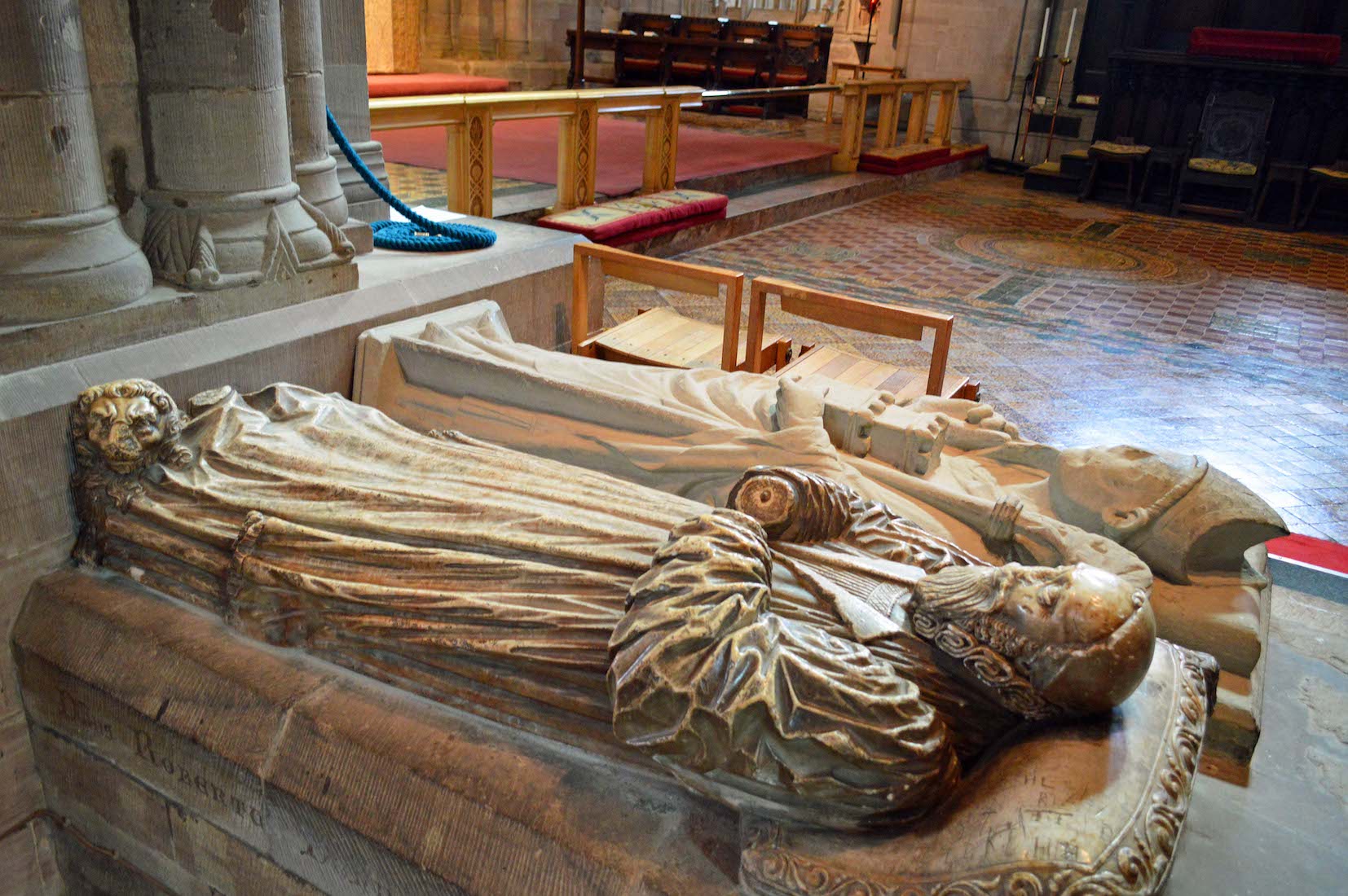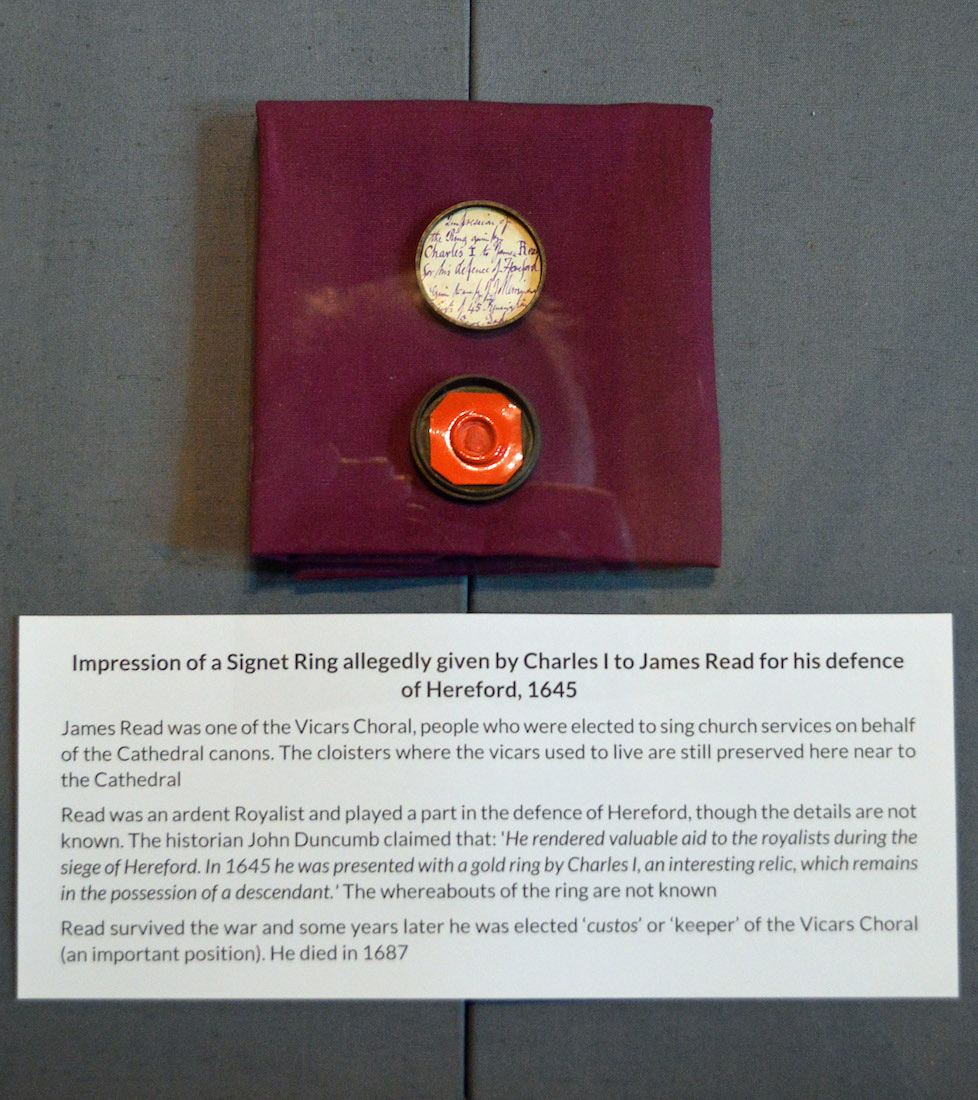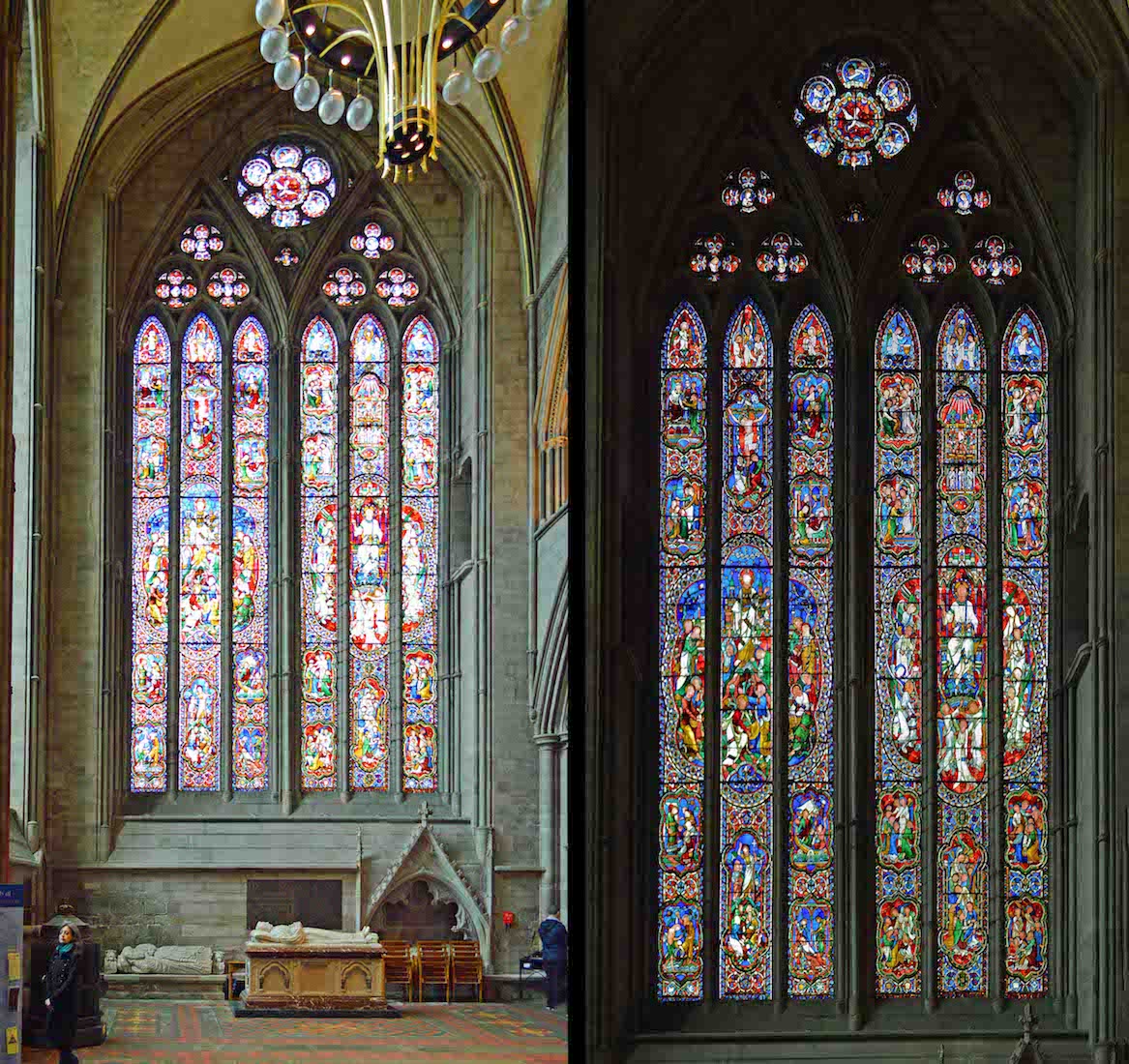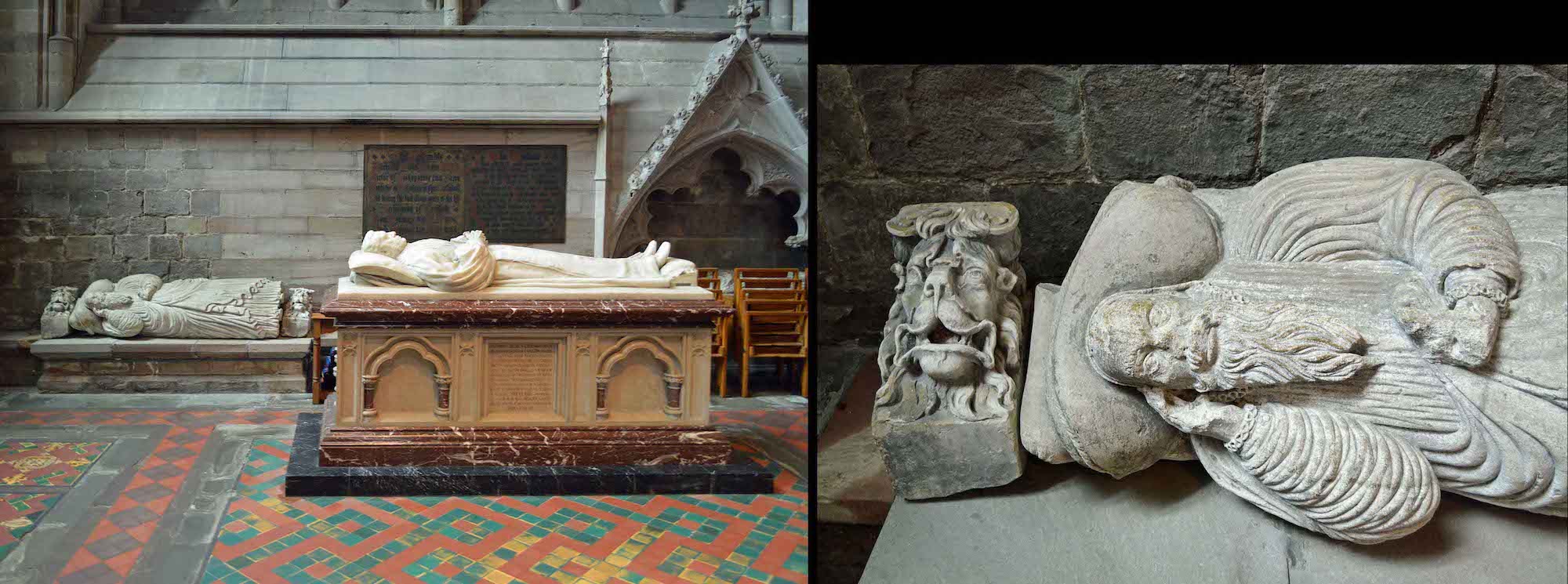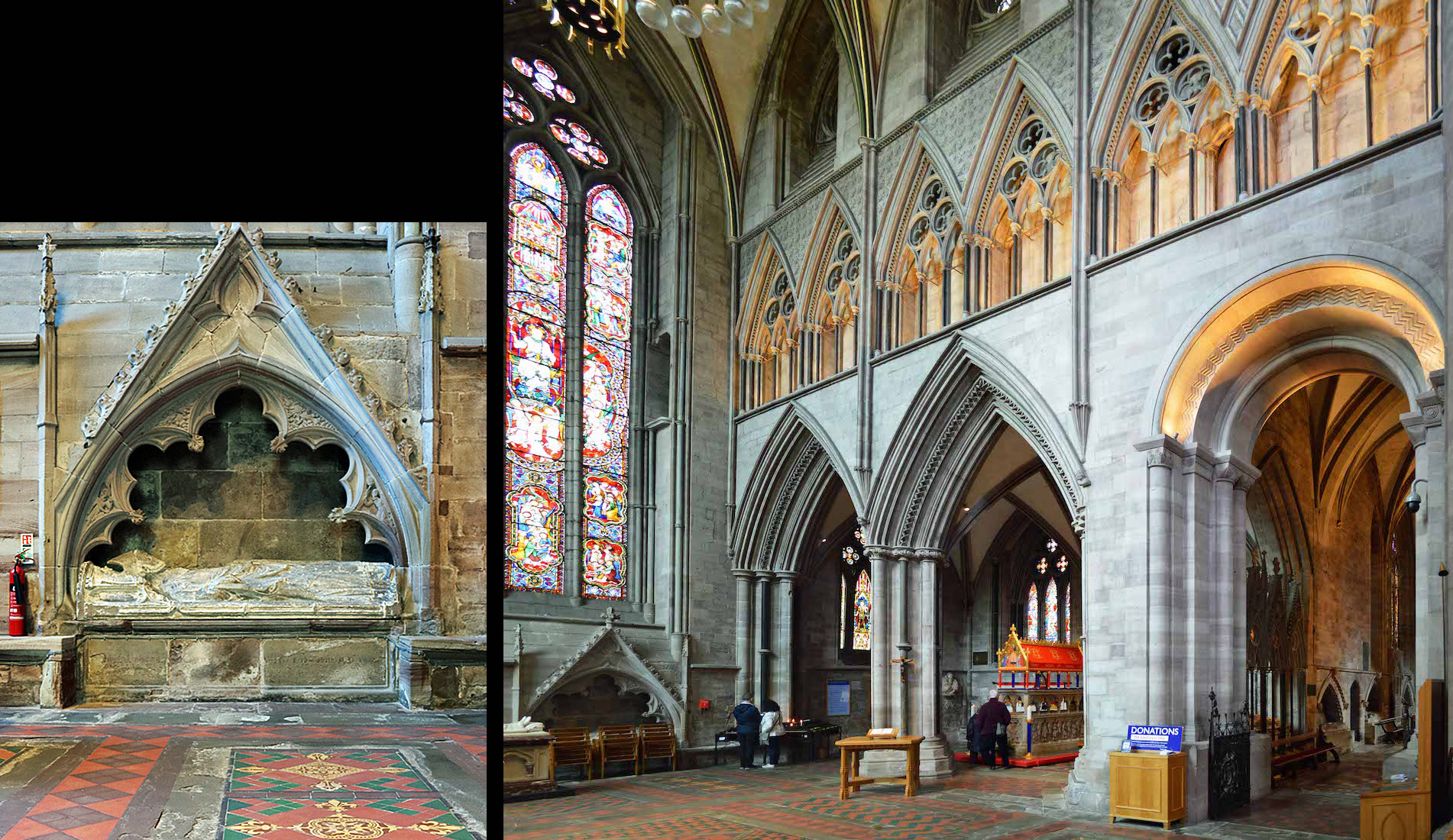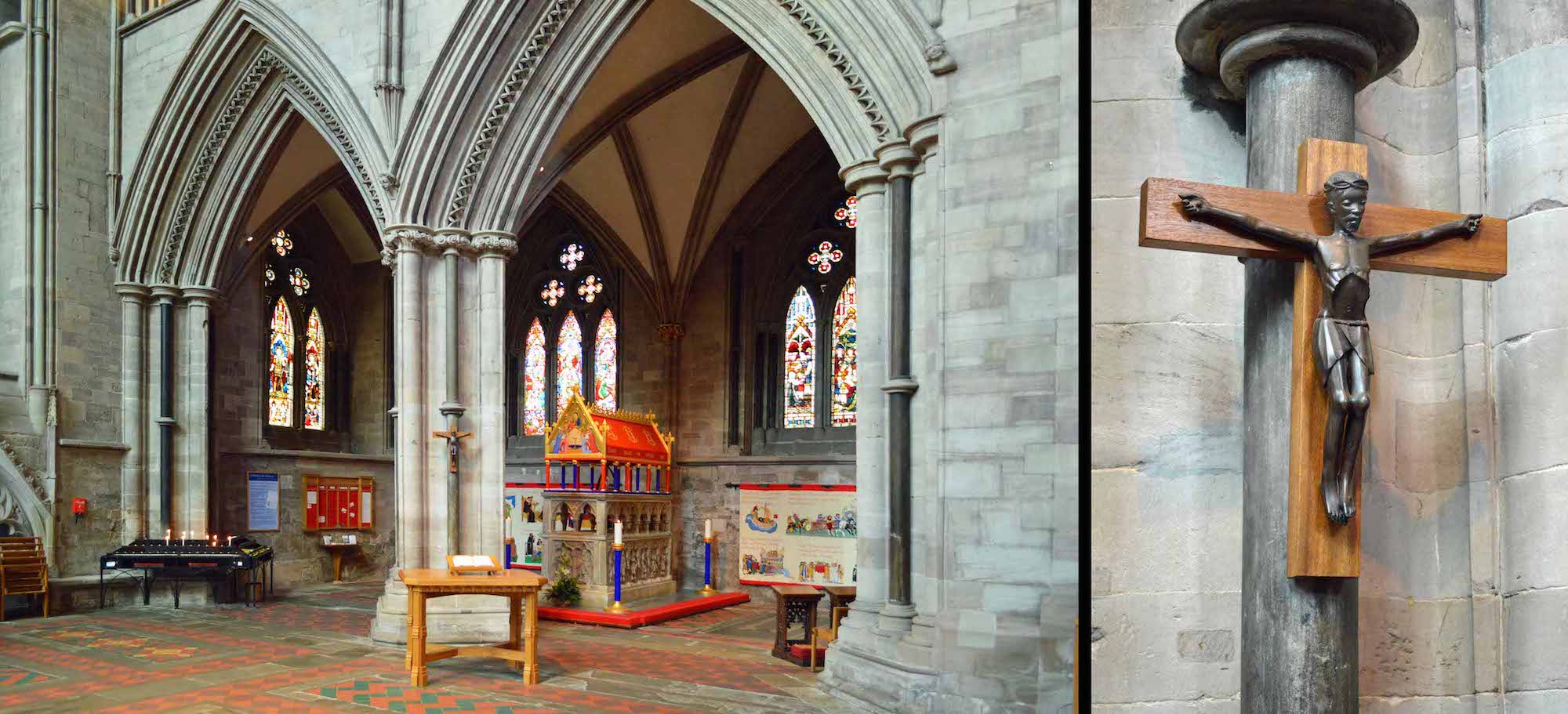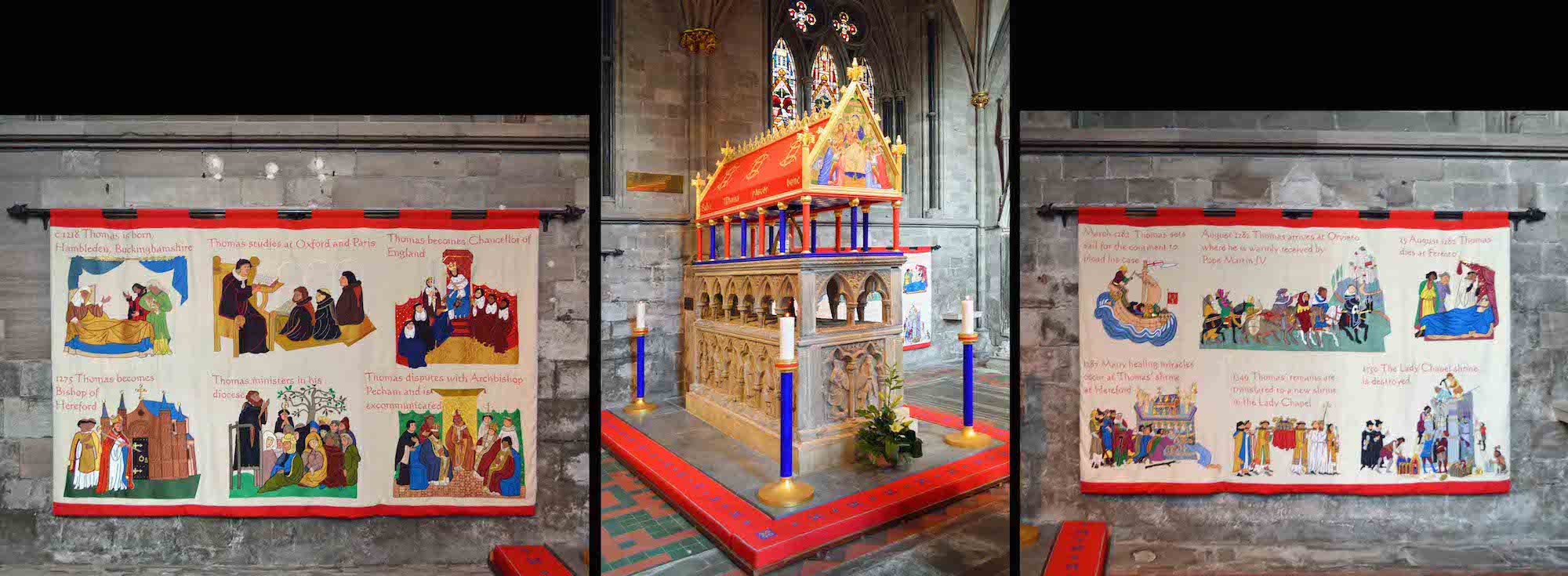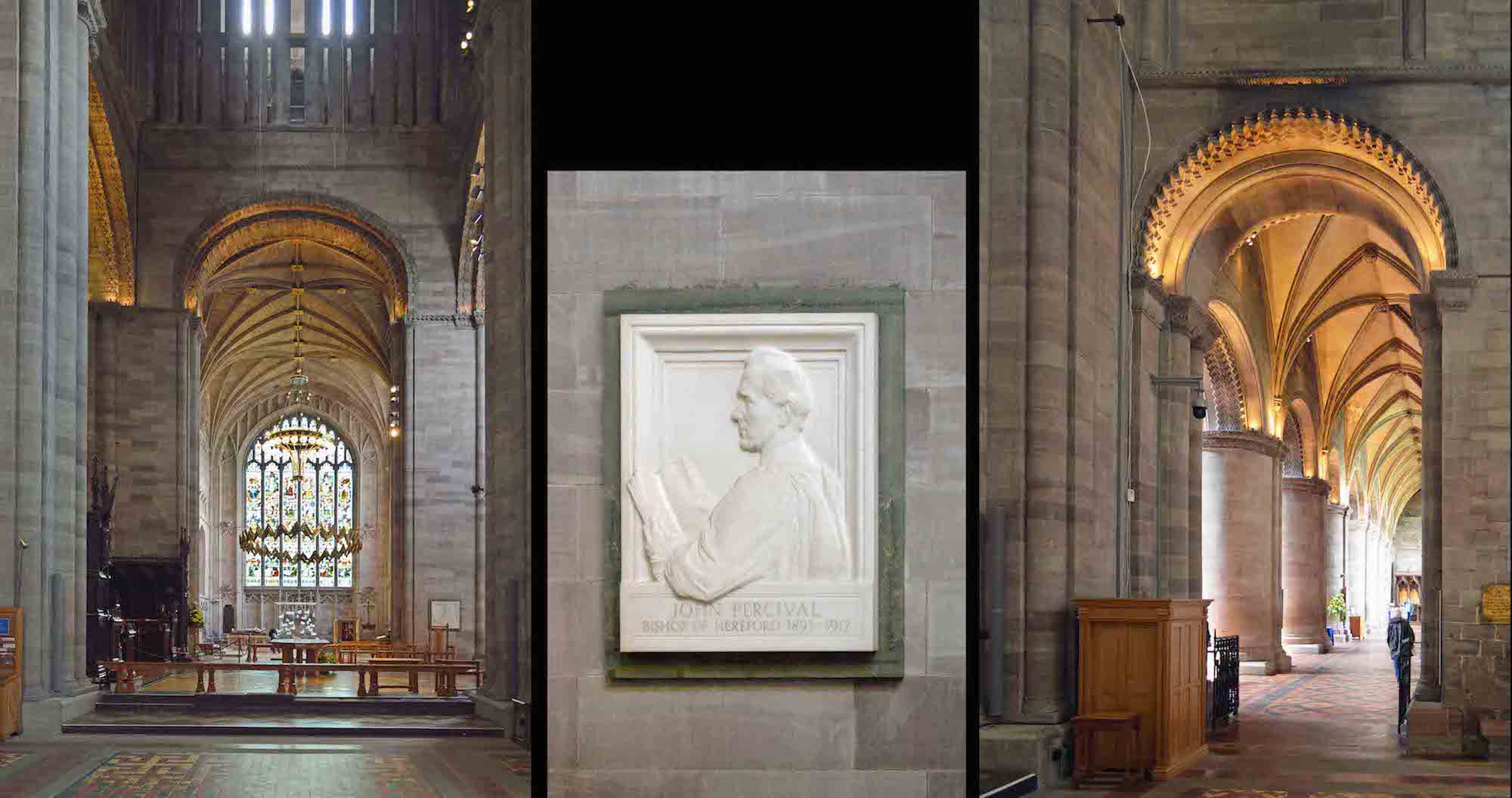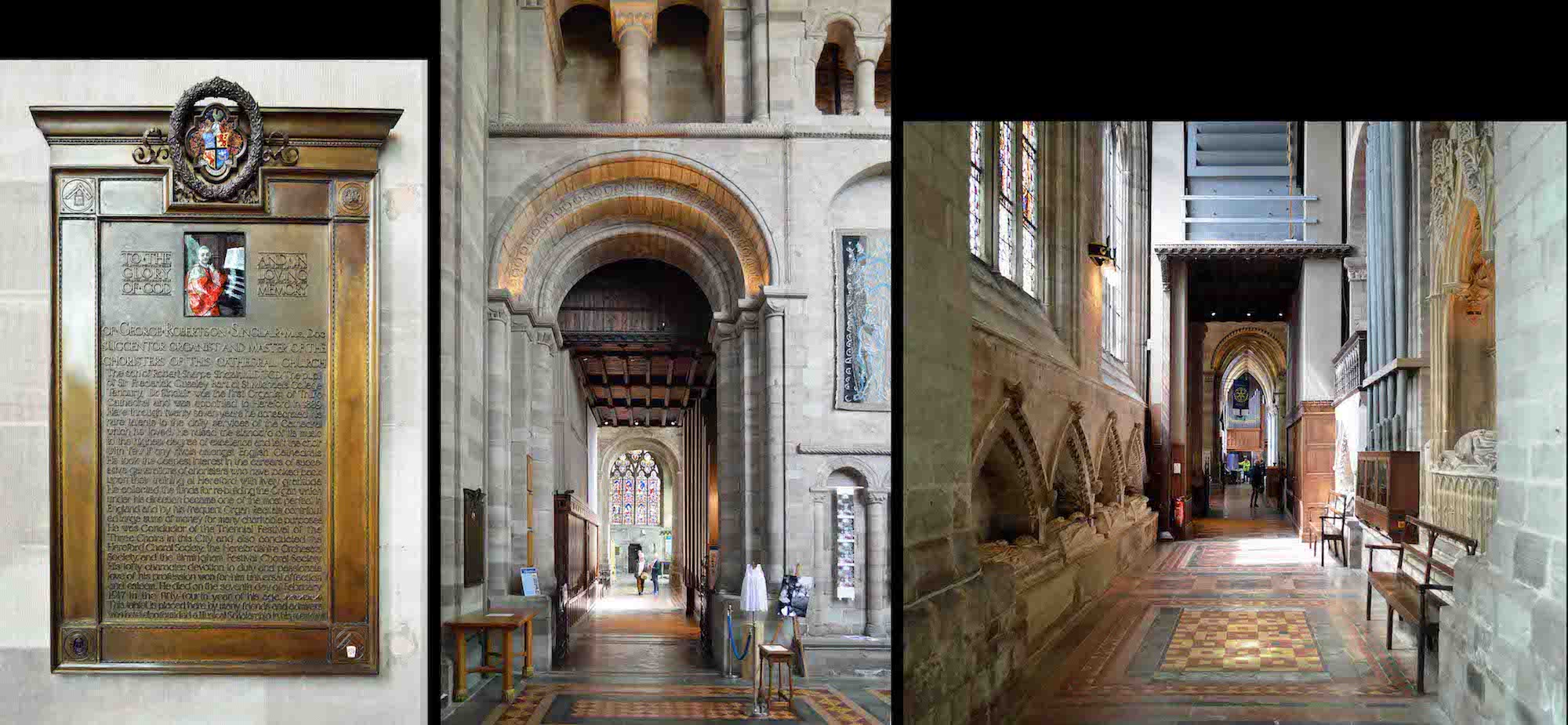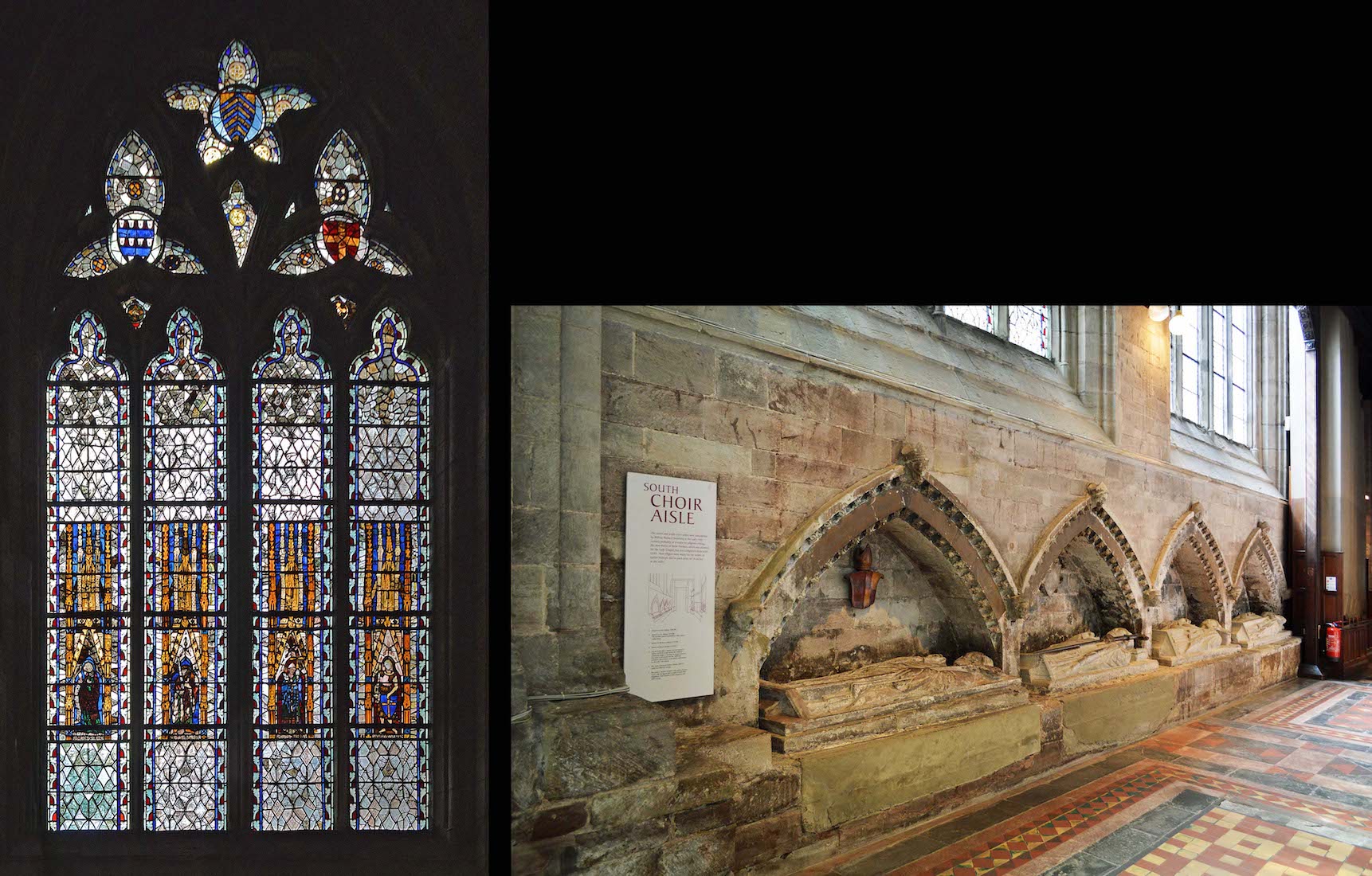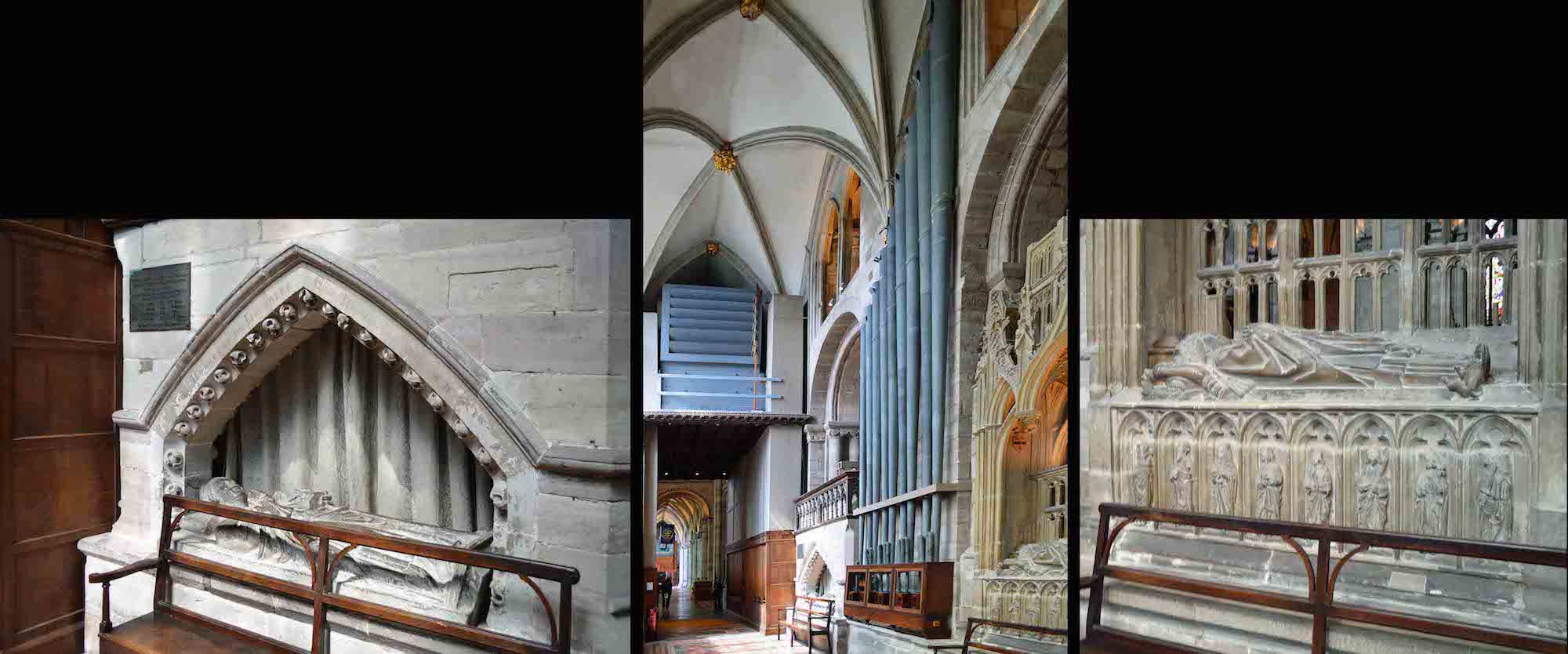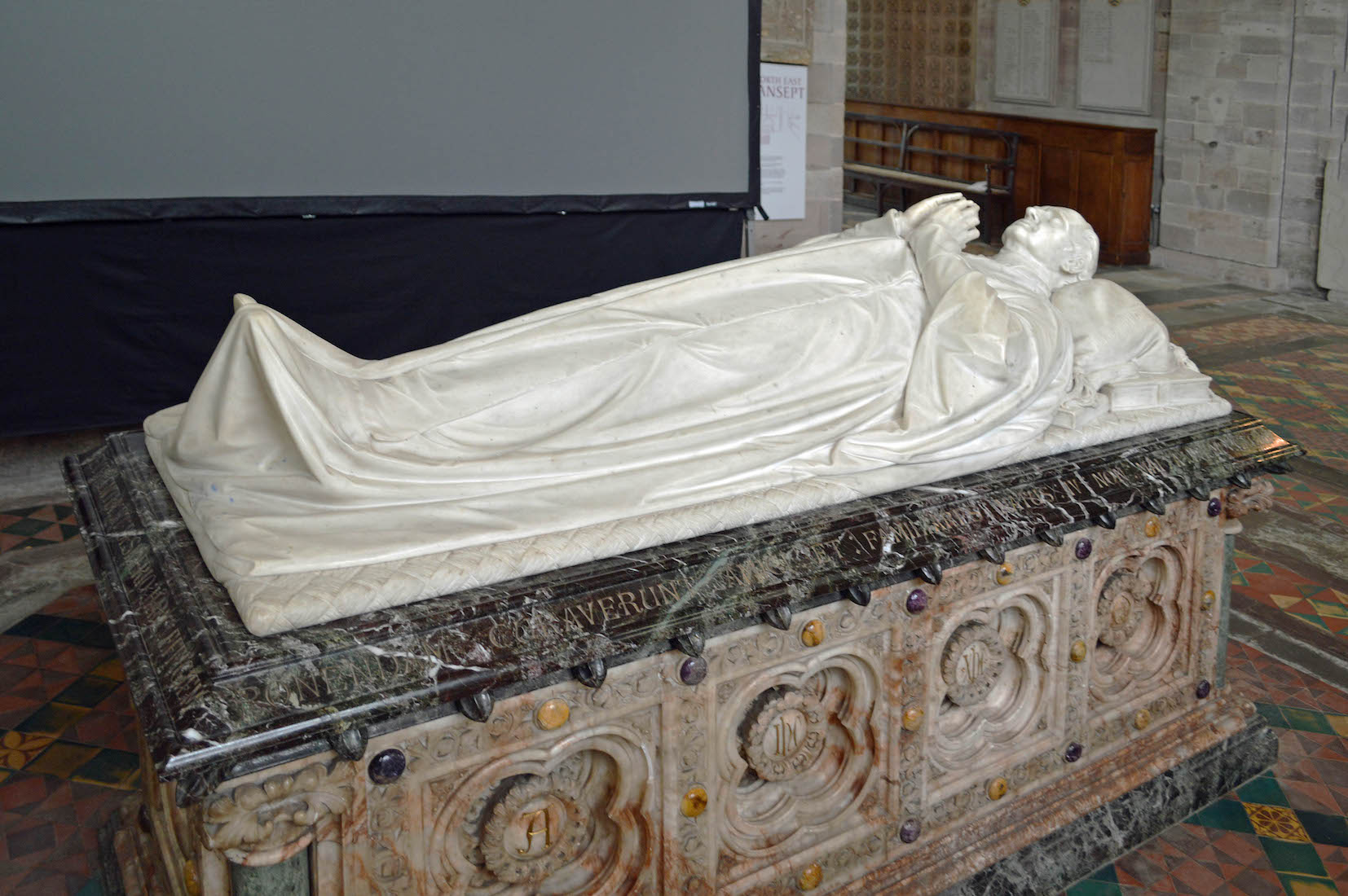
This Victorian tomb in the Northeast transept has some indecipherable writing around the edge, but ... ! PLAN
62. NORTH CHOIR AISLE
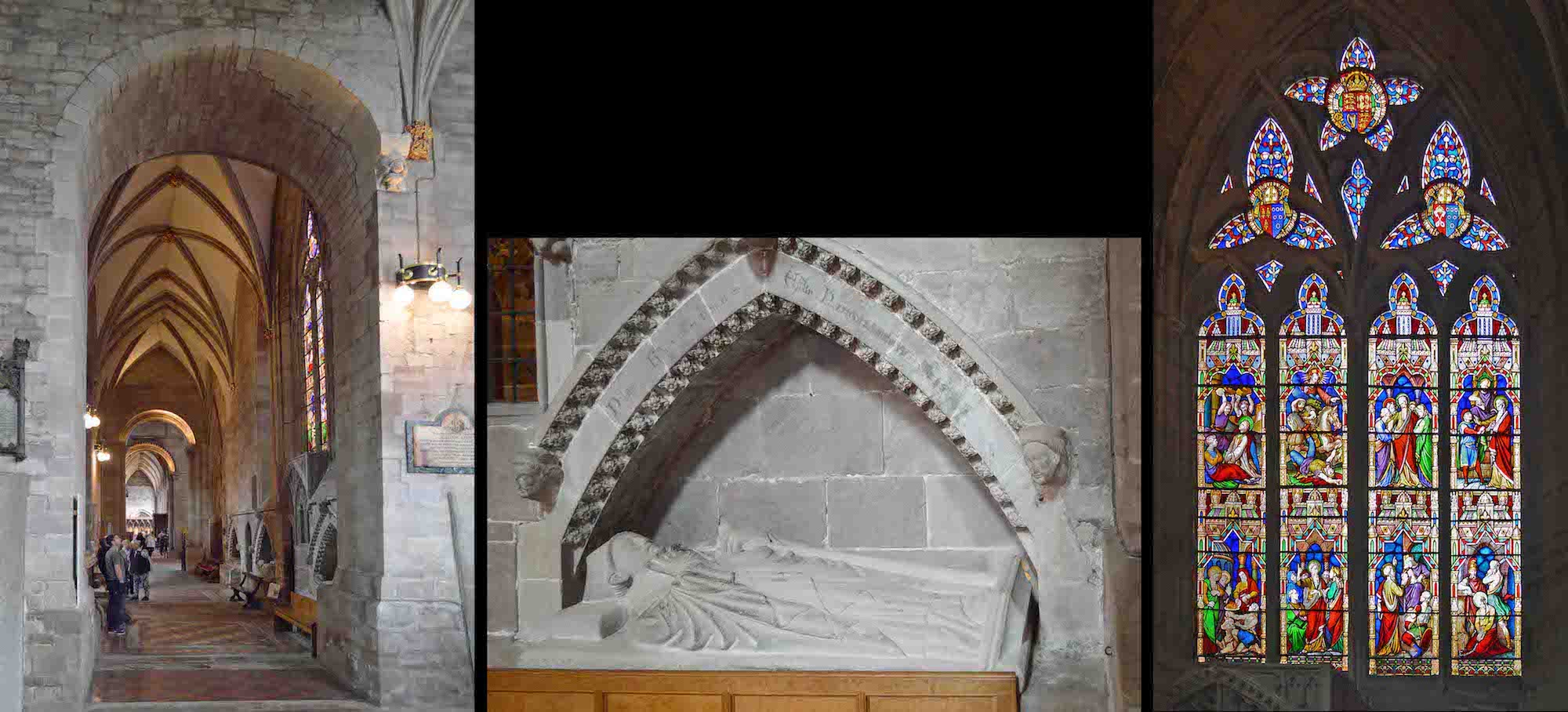
Leaving the Northeast transept, we turn into the North choir aisle, leading us towards the nave. The first effigy on our right is that of Bishop Mapenor, part of a series of posthumous monuments to Hereford’s Saxon bishops (a similar sequence survives at Wells). The window above shows scenes from the life of the Apostle Paul, beginning with the stoning of Stephen.
63. STANBURY CHAPEL ALTAR
We come almost immediately on the right to the Stanbury Chantry Chapel – Bishop John Stanbury died in 1474. The chapel has fine perpendicular fan vaulting. The reredos behind the altar depicts the Virgin Mary and Child Jesus at centre, and perhaps King Ethelbert at left and Bishop Stanbury at right?
64. STANBURY CHAPEL WINDOWS
The chantry chapel of Bishop Stanbury was one of the last medieval additions to the cathedral, dating from c1480. This delightful, intimate space contains two fine Arts & Crafts stained glass windows with historical vignettes by Bromsgrove Guild artist A.J. Davies, c1923. The windows show John Stanbury, priest confessor to Henry VI, at Windsor considering plans for his Eton College, the king granting his royal charter to his new school, Bishop Stanbury arriving at Hereford and entering the Cathedral for his enthronement.
65. NORTH CHOIR AISLE
Continuing our exploration along the North (right) wall of the North choir aisle, we see two more effigies in wall niches and a further window above. Further along is a much grander tomb and effigy (Bishop Aquablanca) which will lead us to the North transept. The window comprises squares with circular patterns and eight pictorial insets. The near tomb effigy is of Bishop Reynelm.
66. AISLE LOOKING WEST
We now check out the other (South) side of the North choir aisle. In order, there is an effigy with tomb chest in the distance, an information board about the Choir, the feet(!) of another recessed effigy, and a display cabinet.
67. BISHOP STANBURY TOMB CHEST EFFIGY
The tomb of Bishop John Stanbury (d.1474) stands opposite the entrance to his fan-vaulted chantry chapel in the North choir aisle, and close to the cathedral’s high altar. It is one of the finer monuments at Hereford, though sadly the carved figures on the tomb chest below the effigy have been defaced.
68. NORTH CHOIR AISLE EFFIGIES
Next on the South side we find the effigies of Bishops Broase & Bennett, lying side by side. In this view, the nearer effigy is of Bishop Bennett (d.1617), all that survives of a larger monument dismantled by Wyatt. The adjacent effigy is of Bishop Broase.
69. AISLE CABINET DISPLAY
The display cabinet contains various items of historical interest including this impression of a signet ring allegedly given by Charles I to James Read for his defence of Hereford in 1645. James Read was a member of the Vicars Choral – people who were elected to sing church services on behalf of the Cathedral canons. Read was an ardent Royalist and played a part in the defence of Hereford.
70. NORTH TRANSEPT
We come to the North transept – a large cavernous space, with relatively little content – at least on the West side. We notice the large colourful Northern window, and three effigies below. The North window is filled with stained glass by Hardman (1864) as a memorial of Archdeacon Lane - Freer (1806–1863). The window depicts on the left ‘The Church Militant’ and on the right ‘The Church Triumphant’. It cost £1200 at the time.
71. NORTH TRANSEPT EFFIGIES
The lower Renaissance effigy at left is of Bishop Westphaling (d.1601) – all that survives of a larger monument dismantled by Wyatt. A more detailed image is shown at right.
72. EAST SIDE OF NORTH TRANSEPT
The tomb and effigy at left (here not hidden by chairs!) belong to Bishop of Hereford, Thomas Charlton (who died 1344). Our attention is now drawn to the East side of the transept with its finely executed arches. The arch at right leads through to the North choir aisle.
73. THROUGH TO SHRINE
Through these arches is the shrine of St Thomas of Hereford. The crucifix is atteched to the central column. Thomas de Cantilupe (c. 1218 – 1282) was Lord Chancellor of England and Bishop of Hereford, and was canonised in 1320 by Pope John XXII.
74. SHRINE OF ST THOMAS
Cantilupe was a controversial character, but after a papal investigation lasting almost 13 years, he was canonised by Pope John XXII in 1320. His feast day was fixed on 2 October. His shrine became a popular place of pilgrimage, but only its base survived the Reformation until a new upper section was recently recreated under the guidance of architect Robert Chitham. The new section is in vivid colours with a painted scene of the Virgin & Child holding the Mappa Mundi. Nearby banners illustrate the life of Thomas.
75. NORTH TRANSEPT SMALL WINDOWS
There are three stained glass windows in this Eastern section of the transept. The left (North) window clearly shows St George, St Michael and St Alban. The central lancet of the second (East) window shows St Michael(?) slaying a dragon; the outer lancets show the Roman soldiers being berated and seeking forgiveness. The right (East) window shows Hannah presenting Samuel to Eli, Jesus welcoming the children, and the boy Jesus teaching in the Temple.
76. LIGHT AND EFFIGY
One of the most impressive tombs at Hereford is that of Bishop Peter Aquablanca (d.1268) which stands in the North transept, the part of the Cathedral he constructed. The effigy is badly worn in places, yet in others retains substantial parts of it's original surface and colouring, such as the deep red of the bishop's vestments. The most significant feature however is the beautiful canopy, a fine example of 13th century English Decorated Gothic, with three gables crowned by foliate crosses on each side (one on the south side retains a tiny crucified Christ figure).
77. ACROSS TO THE SOUTH TRANSEPT
We next make our way across to the South transept. To our right is an aisle to the nave, and we admire the Norman chevron decoration on these arches. Straight ahead though is the South transept. Half way across is a white marble monument to Bishop John Percival (1834 – 1918) who was the first headmaster of Clifton College, where he made his reputation as a great educator. He later accepted the presidency of Trinity College, Oxford. It was from Trinity that he went to Rugby to become headmaster of Rugby School before becoming Bishop of Hereford.
78. SOUTH CHOIR AISLE
As we stand facing the South transept, the South choir aisle (centre) leads off to our left. The pictured memorial plaque is on the left wall. The view at right shows the choir aisle too, but looking Westwards from the Southwest transept. The plaque is in memory of George Robertson Sinclair who served as organist and Master of the Choristers of the Cathedral for many years. We now explore the South choir aisle.
79. AISLE WINDOW AND EFFIGIES
The South wall of the aisle has a single stained glass window, and a line up of the eiffigies of four bishops. Hereford Cathedral certainly looked after its bishops! The effigies here are Bishop de Vere (nearest), and three unknown medieval bishops. William de Vere (died 1198) was Bishop of Hereford and an Augustinian canon.
80. NORTH WALL OF AISLE
Looking now at the North wall of the aisle, there are a further two effigies and a certain amount of organ paraphernalia. The farthest effigy is of Bishop de Losinga. Robert the Lotharingian (died 1095) was a priest who became Bishop of Hereford. His name is often given as Robert de Losinga, but the earliest evidence gives it as Robert the Lotharingian. His birthdate is unknown. The identity of the near effigy must be known, but not to me.


